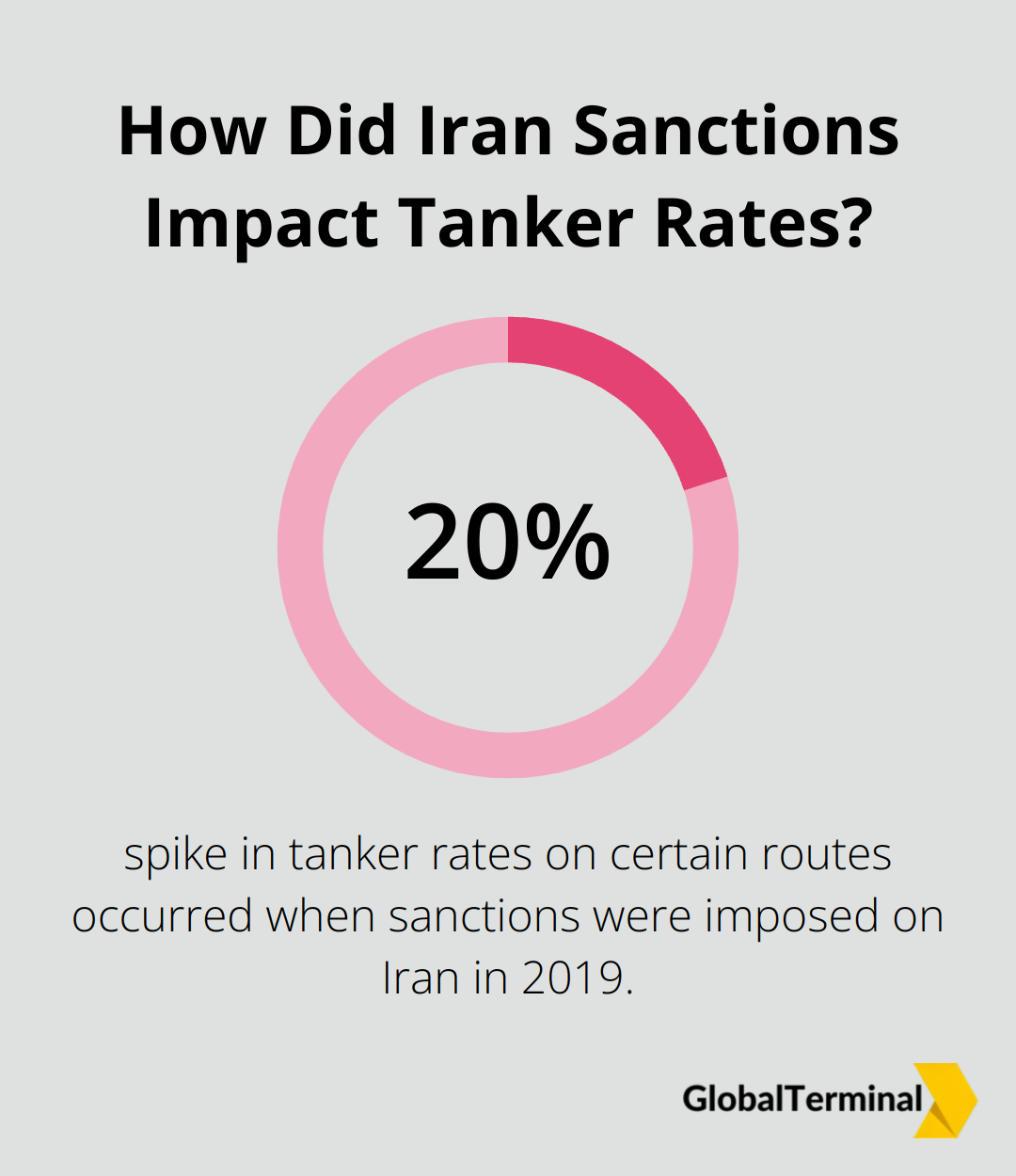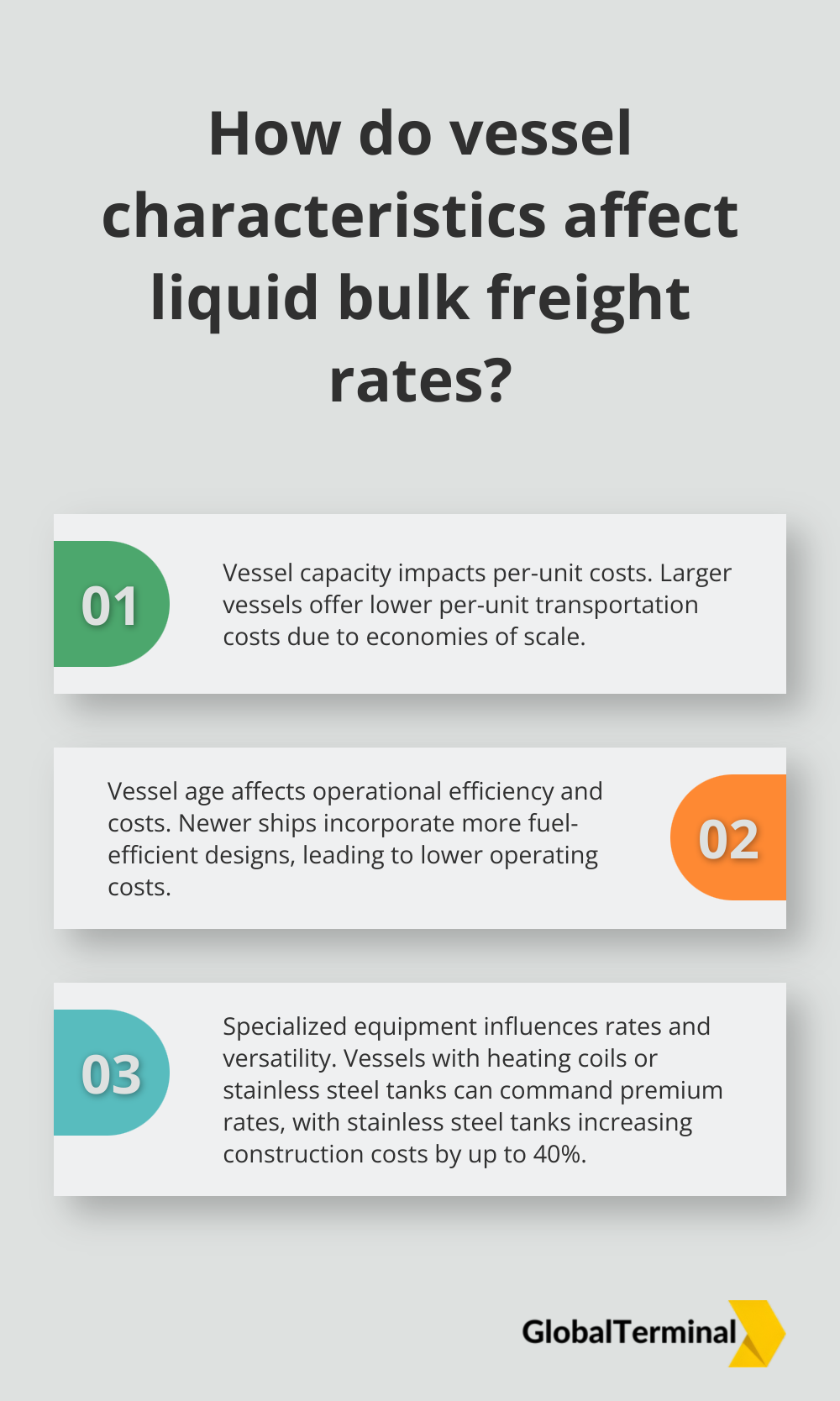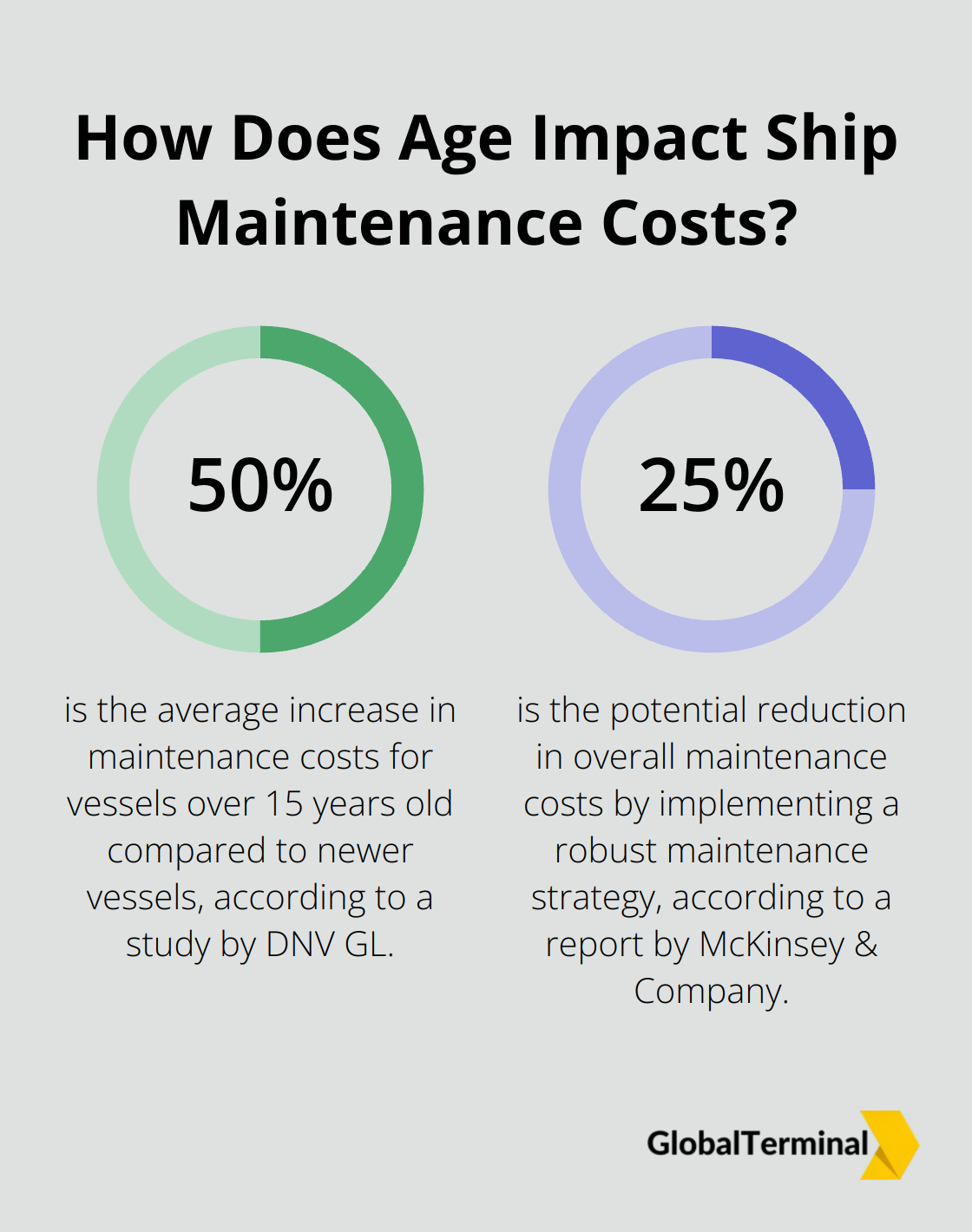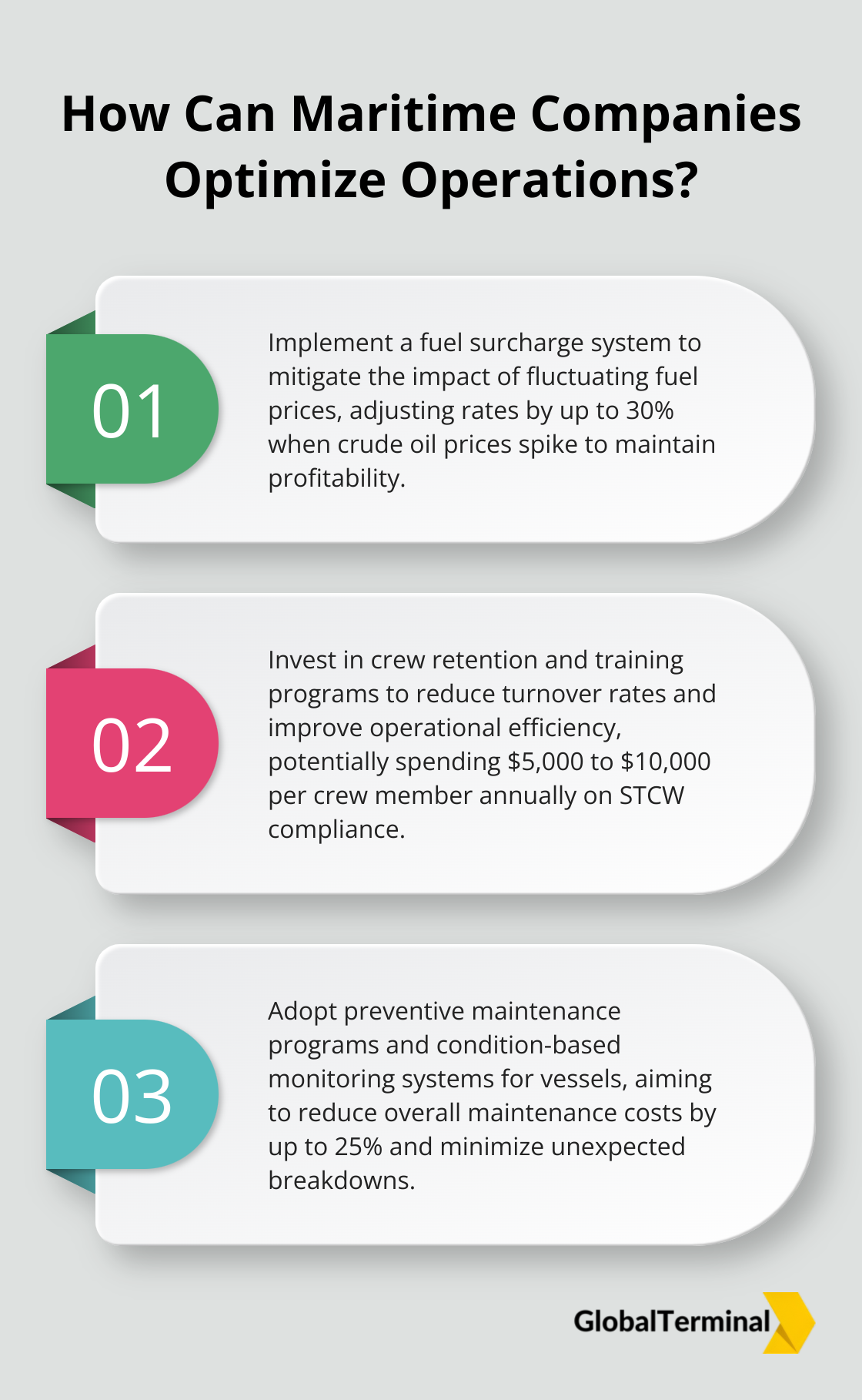
Liquid Bulk Freight Rates: Pricing Factors Explained
Liquid bulk freight rates are a complex and ever-changing aspect of the shipping industry. At GLOBAL TERMINAL NETHERLANDS B.V, we understand the importance of these rates for our clients’ bottom lines.
In this post, we’ll break down the key factors that influence pricing in the liquid bulk sector. From market dynamics to vessel-specific considerations, we’ll provide insights to help you navigate this intricate landscape.
What Drives Liquid Bulk Freight Rates?
The liquid bulk freight market operates as a complex ecosystem where multiple factors influence pricing. At its core, the fundamental principles of supply and demand constantly shift due to global economic conditions and geopolitical events.
The Supply-Demand Balance
Supply and demand in the liquid bulk sector can change rapidly. When major oil-producing countries increase production, we often observe a surge in tanker demand. Economic downturns, however, can lead to reduced consumption, causing an oversupply of vessels and pushing rates down. The dry bulk market experienced fluctuations in freight rates but saw an unprecedented volume of commodities shipped, setting a new record in 2024.
Global Economic Impact
The health of the global economy plays a pivotal role in setting liquid bulk freight rates. During periods of economic growth, industrial production increases, which leads to higher demand for raw materials and energy products. This uptick in demand typically results in higher freight rates. The International Monetary Fund has found a strong correlation between global GDP growth and liquid bulk shipping volumes (with a 1% increase in GDP often translating to a 1.5% increase in shipping demand).
Geopolitical Influences and Trade Policies
Geopolitical events and trade policies can cause significant disruptions in liquid bulk shipping routes and, consequently, rates. Sanctions on oil-producing countries can redirect trade flows, potentially lengthening voyages and increasing costs. The U.S. Energy Information Administration noted that when sanctions were imposed on Iran in 2019, it led to a 20% spike in tanker rates on certain routes as traders sought alternative sources.

Trade tensions between major economies also impact rates. The ongoing discussions between China and the United States have led to shifts in trade patterns for various liquid bulk commodities (including crude oil and liquefied natural gas). These shifts can create inefficiencies in vessel utilization, affecting overall market rates.
Understanding these factors proves essential for anyone involved in the liquid bulk freight industry. Stakeholders who stay informed about global economic trends, geopolitical developments, and supply-demand balances can make more informed decisions and potentially mitigate risks associated with rate volatility.
As we move forward, we’ll examine how vessel-specific factors contribute to the complex pricing equation in the liquid bulk freight market.
How Vessel Characteristics Impact Liquid Bulk Freight Rates
Vessel characteristics play a pivotal role in determining liquid bulk freight rates. These factors influence operational costs, efficiency, and cargo suitability, which ultimately affect the pricing structure.
Vessel Capacity and Economies of Scale
The size of a vessel significantly impacts freight rates in the liquid bulk market. Larger vessels often offer lower per-unit transportation costs due to economies of scale. For larger vessels, the vessel and non-energy costs will be lower per freight unit and for a given amount of cargo at sea, but capital requirements will be higher.

However, larger vessels come with limitations. They require deeper ports and longer loading and unloading times, which can increase overall voyage duration and potentially offset some cost advantages. Smaller vessels like Medium Range (MR) tankers (typically 25,000 to 59,999 DWT) offer more flexibility in port access and are often preferred for shorter routes or smaller cargo volumes.
Age and Efficiency: Operating Cost Implications
A vessel’s age significantly affects its operational efficiency and the freight rates it can command. Newer ships generally incorporate more fuel-efficient designs and technologies, which lead to lower operating costs.
Older vessels, while potentially offering lower charter rates, may incur higher maintenance costs and face stricter environmental regulations. The International Maritime Organization’s (IMO) 2020 sulfur cap has put additional pressure on older vessels, requiring costly retrofits or the use of more expensive low-sulfur fuels. These factors can erode the apparent cost advantage of older ships, making newer, more efficient vessels increasingly attractive (despite potentially higher initial charter rates).
Specialized Equipment: Meeting Cargo-Specific Requirements
The need for specialized equipment on liquid bulk vessels can significantly impact freight rates. Vessels equipped with heating coils for high-viscosity cargoes (like heavy fuel oil) or those with specialized coating for corrosive chemicals command premium rates due to their versatility and the additional investment required in their construction and maintenance.
For instance, stainless steel tanks, essential for transporting aggressive chemicals or high-purity products, can increase vessel construction costs by up to 40% compared to standard epoxy-coated tanks. This investment reflects in higher freight rates for these specialized vessels.
As we move forward, we’ll examine how operational costs further contribute to the complex pricing equation in the liquid bulk freight market, including the impact of fuel prices, crew expenses, and maintenance requirements.
What Drives Operational Costs in Liquid Bulk Shipping?
Operational costs significantly influence liquid bulk freight rates. These expenses directly affect the bottom line for shipping companies and, consequently, the rates they charge. We monitor these factors closely to provide competitive and transparent pricing for our clients.
Fuel Prices: The Biggest Variable
Shipping costs have seen a significant rise over the past year, influenced by a combination of geopolitical instability and regulatory changes. The International Maritime Organization (IMO) 2020 sulfur cap has further complicated this issue, requiring ships to use more expensive low-sulfur fuel or install scrubbers.

For example, when Brent crude oil prices spiked to $139 per barrel in March 2022, it led to a 30% increase in freight rates across various shipping routes. Shipping companies often implement fuel surcharges to mitigate these fluctuations, which can significantly impact the final cost for shippers.
To combat rising fuel costs, many shipping companies invest in more fuel-efficient vessels or explore alternative fuels like LNG. These investments (while costly upfront) can lead to long-term savings and more stable freight rates.
Crew Costs: A Growing Concern
Crew wages and training expenses typically represent 15-20% of a vessel’s operating costs. The global shortage of qualified seafarers has put upward pressure on wages, with the Baltic and International Maritime Council (BIMCO) reporting an average increase of 4.5% in crew wages in 2024.
Moreover, stringent international regulations require ongoing training and certification for crew members. The cost of compliance with the Standards of Training, Certification, and Watchkeeping (STCW) can range from $5,000 to $10,000 per crew member annually.
Shipping companies that invest in crew retention and training programs often see lower turnover rates and improved operational efficiency, which can help stabilize freight rates over time.
Maintenance and Repairs: Balancing Act
Maintenance and repair costs typically account for 10-15% of a vessel’s operating expenses. These costs tend to increase as vessels age, with older ships requiring more frequent and extensive maintenance.
A study by DNV GL found that vessels over 15 years old incur maintenance costs that are, on average, 50% higher than those of newer vessels. This difference can significantly impact freight rates, especially for older vessels.
Preventive maintenance programs and condition-based monitoring systems can help reduce unexpected breakdowns and associated costs. For instance, implementing a robust maintenance strategy can reduce overall maintenance costs by up to 25% (according to a report by McKinsey & Company).
Understanding these operational cost drivers is essential for anyone involved in liquid bulk chemical transportation. Shippers who stay informed about these factors can better anticipate rate changes and make more informed decisions about their transportation strategies.
Final Thoughts
Liquid bulk freight rates fluctuate due to various factors, including market dynamics, vessel characteristics, and operational costs. Companies must stay informed about global economic trends, geopolitical events, and industry regulations to navigate this complex landscape effectively. Proactive strategies, such as long-term contracts and cargo consolidation, can help mitigate price volatility and leverage economies of scale.

Establishing relationships with reliable shipping partners provides valuable insights and potentially leads to more favorable rates. At GLOBAL TERMINAL NETHERLANDS B.V, we offer premier fuel storage and logistics solutions to optimize supply chains and manage costs effectively. Our strategic locations and state-of-the-art facilities ensure efficient liquid bulk transportation.
Understanding the factors that influence liquid bulk freight rates enables businesses to make informed decisions and better navigate price fluctuations. This knowledge, combined with partnerships with experienced industry players, can result in more stable and predictable shipping costs over time. Companies that prioritize these aspects will position themselves for success in the dynamic liquid bulk shipping market.





Leave a Reply